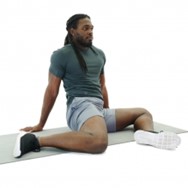Pre-natal Physiotherapy will guide you through the significant changes to your body that happen during pregnancy, prepare you for childbirth and accelerate your post-natal recovery. This is suitable for women planning a vaginal or a c-section birth.

Exercising whilst pregnant
Evidence shows in most cases it is not harmful to exercise whilst pregnant.
- It can help maintain and improve strength and fitness during pregnancy, preparing you for all things motherhood (e.g. lifting the buggy into the boot of the car).
- Exercising whilst pregnant can reduce your risk of high blood pressure and gestational diabetes.
- It can help regulate maternal weight gain to keep your pregnancy as low risk as possible.
- It can reduce the risk of pre-eclampsia.
- There are huge mood benefits due to the release of endorphins when you exercise.
There are some cases it might be important to consider stepping back from exercise or exercising the way you used to for the health of you and your baby. If you are struggling to know where to start, book here to see our specialists womens health physiotherapists.
Pre-natal pelvic floor
There are multiple physiological changes to the pelvic floor muscles throughout pregnancy, and these are just a couple of examples:
- Hormonal fluctuations, mostly an increase in relaxin and progesterone, lead to softening of connective tissues that facilitate childbirth.
- As the uterus expands and baby grows, this can place considerable strain on the muscles, connective tissues and ligaments that support the pelvic organs, and can affect the pelvic floor muscle contractility.
Pelvic floor muscle training, like Kegels, are recommended during pregnancy to strengthen the pelvic floor muscles. Studies have suggested that women who engage in regular pelvic floor muscle training have lower rates of urinary incontinence and experience better postpartum pelvic floor recovery.
Pregnancy related musculoskeletal pain
Pregnancy related musculoskeletal pain can come in different forms: pelvic girdle pain, back pain, rib pain, hip pain, and this is due to the changes in hormones, weight gain, posture and abdominal muscle separation (diastasis recti).
Read Anna’s blog on pelvic pain in pregnancy here
Specialist physiotherapy can help manage these symptoms through pregnancy.
- Exercises, like core stabilisation, pelvic floor muscle strengthening and gentle stretching, can improving pain levels in the lower back and pelvis.
- Due to the change in your centre of gravity, postural adjustments become necessary by providing education on posture and strengthening exercises for the upper back and shoulders.
- Manual therapy, including joint mobilisations and soft tissue massage, and acupuncture are often used by our specialist physiotherapists to relieve muscular tension.
- Breathing and relaxation techniques should be incorporated into exercise programmes to help with pain modulation and anxiety / stress when approaching childbirth.
Childbirth preparation
Perineal massage
This is gentle stretching of the perineum (the area between the vulva and anus) through massage, recommended from 34 weeks. It can reduce your risk of sustaining a more severe perineal tear (3rd or 4th degree tear) and need for episiotomy by increasing tissue elasticity.
Stretching
Pre-natal stretching in the third trimester can help prepare you for childbirth by opening the hips and relaxing the pelvic floor. Below are a couple of recommended stretches for prepare for childbirth.


Pushing techniques and birthing positions
It is important to establish effective birthing positions, and practice them before birth, so you can fully relax the pelvic floor and create more space at the pelvic outlet. Lying on your back is not the best position – try lying on your side or 4 point kneeling.
You shouldn’t hold your breath to push, try breathing out as you push. This will reduce your fatigue on the pelvic floor and risk of tearing or prolapse.
At Head2Toe Physio, we can expertly assess your pelvic floor function.
If you or anyone you know, would like to have a Women’s Health Physiotherapy assessment with Evie or Anna at Dorking or Leatherhead, book online here or contact us here.
Blog post guest written by Evie Spreadbury, Women’s Health Specialist Physiotherapist, member of Pelvic, Obstetric & Gynacological Physiotherapists (POGP), Dorking, & Leatherhead Clinics.

References:
BJOG: An International Journal of Obstetrics & Gynaecology, 2020. Effectiveness of perineal massage on perineal trauma and pain. BJOG: An International Journal of Obstetrics & Gynaecology, 127(6), pp.768-774.
Bø, K., & Herbert, R. D. (2013). Exercise during pregnancy: Its role in prevention and treatment of pregnancy-related conditions. Exercise and Sport Sciences Reviews, 41(1), 26–32. DOI:10.1097/JES.0b013e318272e193.
Boyle, R., Hay-Smith, E. J. C., Cody, J. D., & Mørkved, S. (2012). Pelvic floor muscle training for prevention and treatment of urinary and faecal incontinence in antenatal and postnatal women. Cochrane Database of Systematic Reviews, (10). DOI:10.1002/14651858.CD007471.pub2.
Davenport, M., Meah, V., Ruchat, S., Davies, G., Skow, R., Barrowman, N., … Mottola, M. F. (2018). Impact of prenatal exercise on neonatal and childhood outcomes: A systematic review and meta-analysis. British Journal of Sports Medicine, 52(21), 1386–1396.
Field, T., Diego, M., Delgado, J., & Medina, L. (2013). Yoga and massage therapy reduce prenatal depression and prematurity. Journal of Bodywork and Movement Therapies, 17(4), 381–388. DOI:10.1016/j.jbmt.2013.03.004.
George, J. W., Skaggs, C. D., Thompson, P. A., Nelson, D. M., Gavard, J. A., & Gross, G. A. (2013). A randomized controlled trial comparing a multimodal intervention and standard obstetric care for low back and pelvic pain in pregnancy. American Journal of Obstetrics and Gynecology, 208(4), 295.e1–295.e7. DOI:10.1016/j.ajog.2012.12.022.
Mogren, I. M. (2006). Perceived health, sick leave, psychosocial situation, and sexual life in women with low back pain and pelvic pain during pregnancy. Acta Obstetricia et Gynecologica Scandinavica, 85(6), 647–656. DOI:10.1080/00016340600607298.
Mørkved, S., & Bø, K. (2014). The effect of pelvic floor muscle training during pregnancy and after childbirth on urinary incontinence: a systematic review. British Journal of Sports Medicine, 48(4), 299–310. DOI:10.1136/bjsports-2012-091758.
Mørkved, S., & Bø, K. (2014). The effect of pelvic floor muscle training during pregnancy and after childbirth on urinary incontinence: a systematic review. British Journal of Sports Medicine, 48(4), 299–310. DOI:10.1136/bjsports-2012-091758.
Physical activity and pregnancy (no date) RCOG. Available at: https://www.rcog.org.uk/for-the-public/browse-our-patient-information/physical-activity-and-pregnancy/ (Accessed: 08 November 2024).
Savvaki, D. et al. (2018) ‘Guidelines for exercise during normal pregnancy and gestational diabetes: A review of international recommendations’, Hormones, 17(4), pp. 521–529. doi:10.1007/s42000-018-0085-6.
Vleeming, A., Albert, H. B., Östgaard, H. C., Sturesson, B., & Stuge, B. (2008). European guidelines for the diagnosis and treatment of pelvic girdle pain. European Spine Journal, 17(6), 794–819. DOI:10.1007/s00586-008-0602-4.

Evie Spreadbury
Evie Spreadbury is a member of Pelvic Obstetric and Gynaecological Physiotherapy (POGP) and has been undergone specialist training for women’s pelvic health and gynaecological issues.





